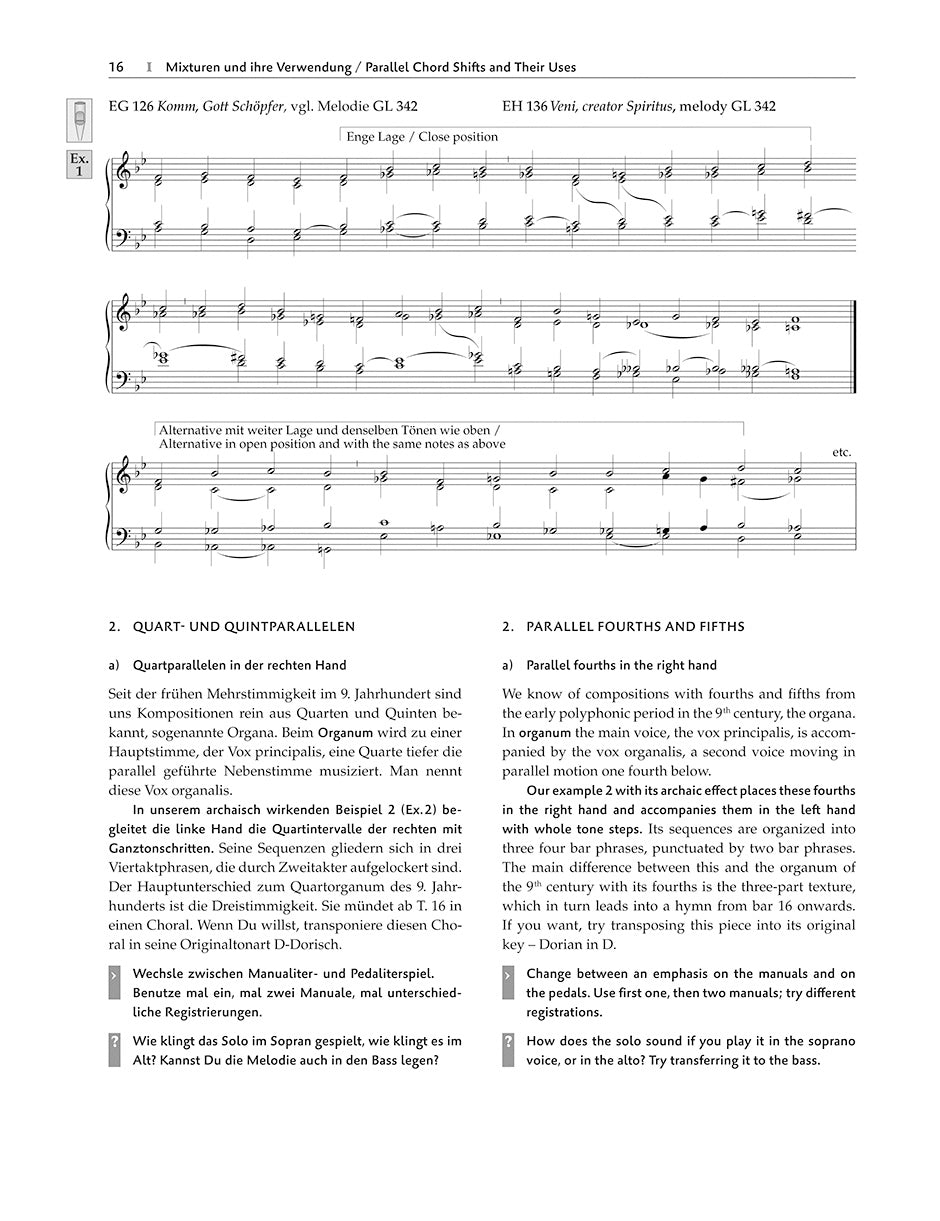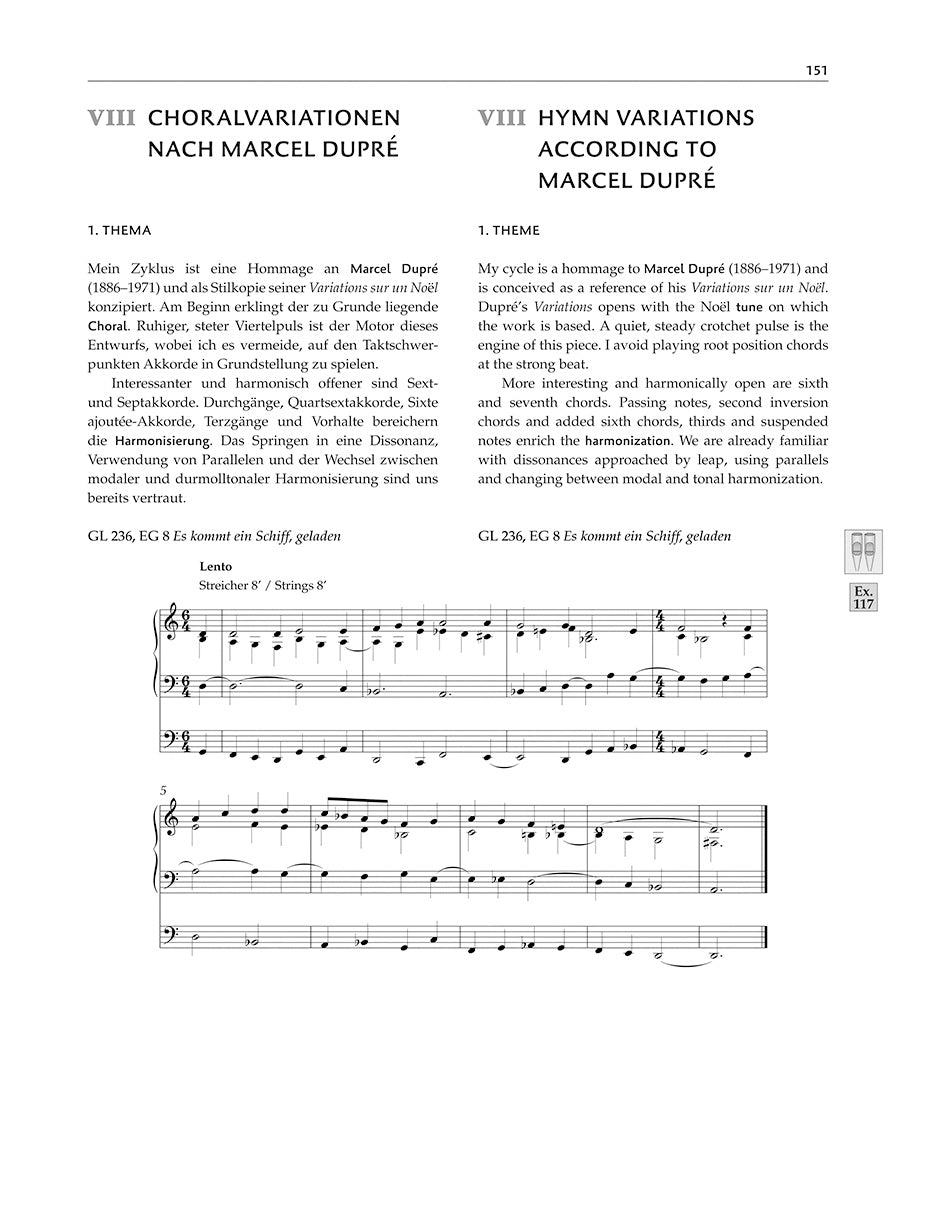Rieg: Fire and Colour
Modern chorale harmonization and free improvisation
Expected to ship in about a week.
- Composer: Iris Rieg
- Instrumentation: Organ
- Binding: Hardcover
- ISMN:
- Size: 9.1 x 11.8 inches
- Pages: 401
Description
In her two-volume organ improvisation method, Iris Rieg presents an immense wealth of creative yet systematic approaches for discovering colourful harmonies on the "queen of instruments." She clearly demonstrates how one can experiment and play with intervals, chords, scales, rhythm patterns and much more, in styles ranging from the Renaissance to the modern era.
In the first volume, the author provides an introduction to various harmonic techniques, starting with systematic exercises based on parallel shifting musical structures (intervals, chords). The harmonisation of scales leads to interesting chord combinations, including those based on thirds and tritones. Using ostinato models, instructions are given for the conception of a virtuoso toccata.
Significant milestones in the history of organ music form the guiding principle for the second volume. Here organists becomes acquainted with characteristic improvisation techniques. Valuable tips for creating stylistic imitations enrich the detailed descriptions of multi-movement forms, such as concerto, mass or suite. Particular emphasis is based on romantic harmonisation (Max Reger) and French tonal aesthetics (Marcel Dupré).
The two volumes, which are ideal for self-study for students, teachers and professional organists, are aimed at those who want to start improvising in church services, but also offer inspiration to those who already improvise on a daily basis and, for example, want to create an organ symphony based on hymns in a live setting. The numerous exercises at different levels of difficulty are logically structured yet allow organists to start at any chapter and begin right away.
Above all, the joy of playing always takes centre stage!
Publishers use a lot of words to describe what they sell, and we know it can be confusing. We've tried to be as clear as possible to make sure you get exactly what you are looking for. Below are descriptions of the terms that we use to describe the various formats that music often comes in.
Choral Score
A score for vocalists that only contains the vocal lines. The instrumental parts are not there for reference. Generally, cheaper than a vocal score and requires multiple copies for purchase.
Facsimile
Reproductions of the original hand-written scores from the composer.
Full Score
For ensemble music, this indicates that the edition contains all parts on a single system (there are not separate parts for each player). In larger ensembles, this is for the conductor.
Hardcover
Hardbound. Generally either linen-covered or half-leather.
Orchestral Parts
Similar to a wind set, this is a collection of parts. In the case of strings, the numbers listed are the number of copies included, though generally these are available individually (often with minimum quantities required).
Paperback
When publishers offer multiple bindings (e.g. hardcover) or study scores, this is the "standard" version. If you're planning to play the music, this is probably what you want.
Performance / Playing Score
A score of the music containing all parts on one system, intended for players to share. There are not separate parts for each player.
Set of Parts
For ensemble music, this indicates that there are separate individual parts for each player.
Solo Part with Piano Reduction
For solo pieces with orchestra, this is a version that contains a piano reduction of the orchestra parts. For piano pieces, two copies are typically needed for performance.
Study Score
A small (think choral size) copy of the complete score meant for studying, and not playing. They make great add-ons when learning concertos and small chamber works.
Vocal Score
A score prepared for vocalists that includes the piano/organ part or a reduction of the instrumental parts.
Wind Set
For orchestral music, this is a collection of wind and percussion parts. The specific quantities of each instrument are notated.
With Audio
In addition to the printed music, the edition contains recordings of the pieces. This may be an included CD, or access to files on the internet.
With / Without Fingering (Markings)
Some publishers prepare two copies - a pure Urtext edition that includes no fingering (or bowing) suggestions and a lightly edited version that includes a minimal number of editorial markings.





